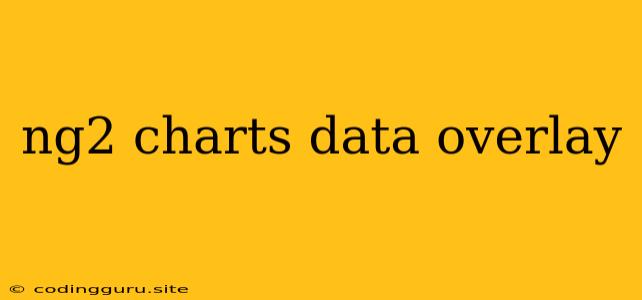Enhancing Data Visualization with ng2-charts: Overlaying Data for Clearer Insights
ng2-charts is a powerful charting library for Angular applications, offering a wide range of chart types to visualize your data effectively. While ng2-charts excels at presenting core data, sometimes you need to overlay additional information onto the chart to enhance understanding and provide context. This can be achieved by combining ng2-charts with other techniques, allowing you to add extra layers of meaning to your visualizations.
Why Overlay Data?
Overlaying data on an ng2-charts visualization can be incredibly useful for:
- Highlighting Trends: Overlay a trendline or moving average to show long-term patterns within your data.
- Comparing Datasets: Overlay different datasets on the same chart for side-by-side comparison.
- Adding Annotations: Include labels, arrows, or other annotations to draw attention to specific data points or events.
- Providing Context: Overlay external data, like a time series of events, to connect your chart to broader context.
Implementing Data Overlays with ng2-charts
Here are several methods to achieve data overlays in ng2-charts:
1. Using Multiple Chart Instances:
- Create separate ng2-charts instances for each dataset you want to overlay.
- Position these charts on top of each other using CSS absolute positioning or similar techniques.
- This approach offers flexibility but may require careful alignment to ensure visually appealing overlays.
2. Leveraging Chart Plugins:
- ng2-charts supports custom plugins that can modify the chart's behavior.
- Write a plugin to draw custom elements, such as lines, shapes, or annotations, directly on the chart canvas.
- This method allows for precise placement and control over the overlay elements.
3. Integrating with Angular Components:
- Create Angular components to represent the overlays and position them within your chart's HTML template.
- Utilize Angular's data binding to dynamically update the overlay based on your data.
- This approach offers seamless integration with your Angular application and simplifies the management of overlays.
Example: Overlay a Trendline on a Line Chart
import { Component } from '@angular/core';
import { ChartData, ChartOptions, ChartType } from 'chart.js';
@Component({
selector: 'app-chart-overlay',
templateUrl: './chart-overlay.component.html',
styleUrls: ['./chart-overlay.component.css']
})
export class ChartOverlayComponent {
public lineChartData: ChartData<'line'> = {
labels: ['January', 'February', 'March', 'April', 'May', 'June', 'July'],
datasets: [
{
data: [10, 20, 30, 40, 50, 60, 70],
label: 'Data Points',
fill: false,
borderColor: 'blue'
}
]
};
public lineChartOptions: ChartOptions<'line'> = {
responsive: true,
plugins: {
// Plugin for adding the trendline overlay
trendline: {
show: true,
lineColor: 'red'
}
}
};
public lineChartType: ChartType = 'line';
}
In this example, we use a custom plugin (named 'trendline') to draw a trendline overlay on the line chart. The plugin is configured within the plugins option of the chart options object.
Tips for Effective Data Overlays
- Keep it Simple: Avoid overwhelming your chart with too many overlays. Focus on the most impactful information.
- Color Contrast: Choose overlay colors that stand out from the base chart data while maintaining visual harmony.
- Transparency: Use transparency for overlays to ensure visibility of underlying data.
- Interactive Overlays: Consider making overlays interactive to provide further insights on hover or click.
Conclusion
Overlaying data on ng2-charts visualizations provides a powerful means to enrich your data storytelling. By creatively applying techniques like custom plugins, Angular components, or multiple chart instances, you can enhance your charts with additional context and clarity. Remember to keep overlays simple, visually appealing, and aligned with the specific goals of your visualization.
